Learn how to identify bugs in your home and spot infestations of the 15 most common critters
Found a pest lurking? Learn how to identify bugs in your home, from early signs to full blown infestations and what to do next

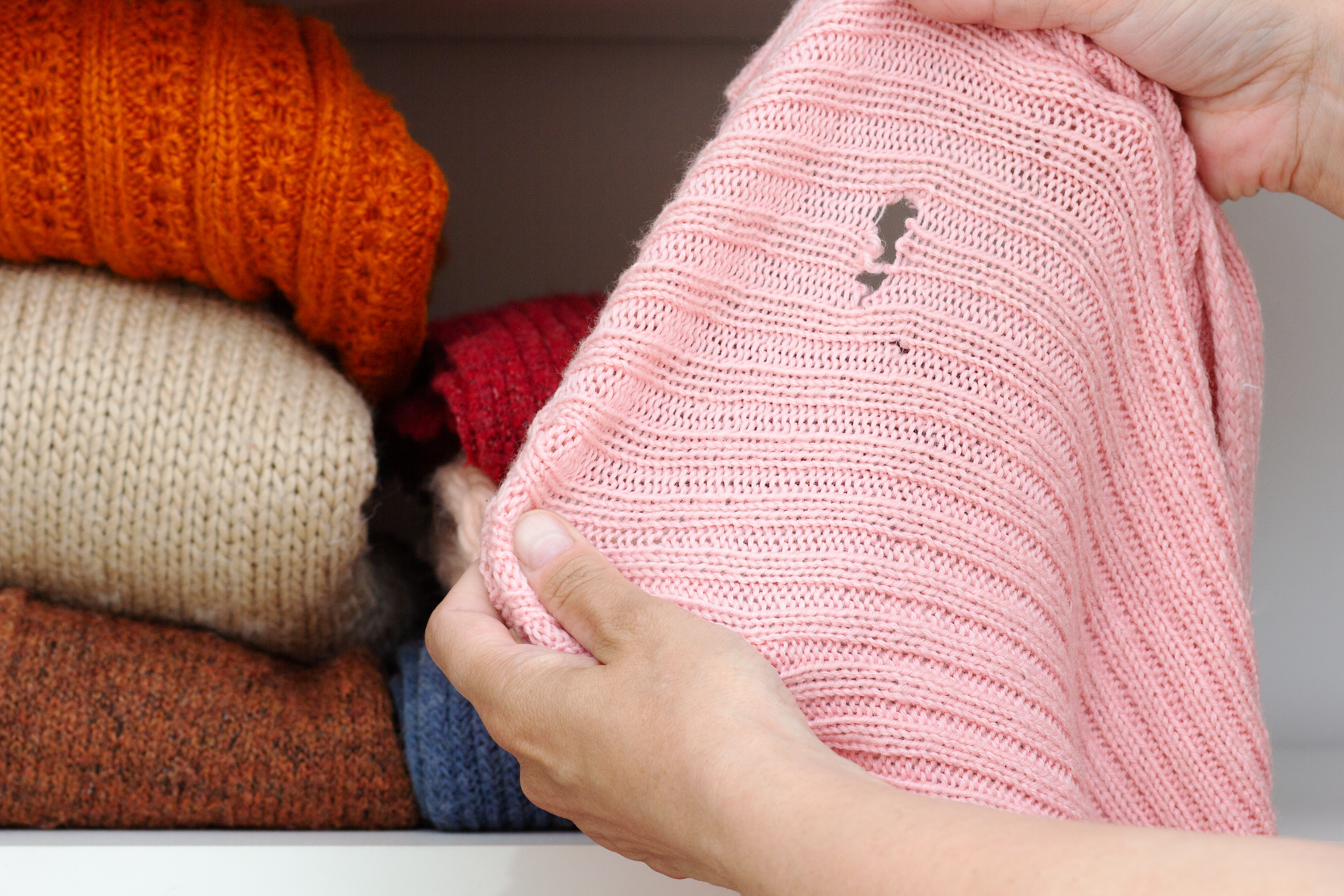
Learn how to identify bugs in your home with our handy pest checklist and you'll quickly be on your way to banish them for good.
Our guide features the 15 most common household pests, details their physical features, and what subtle signs to watch out for that will reveal an infestation is underway, including sightings, damage to your home, itchy bites, and droppings.
Staying alert to pests in your abode and identifying them quickly will help keep your home free of critters this summer and free of unwanted, creepy-crawly guests.
How to identify bugs in your home
Our detailed guide will help you identify common bugs that can set up camp in your home, so you can get onto tackling them with the right arsenal of pest control items and the best cleaning products.
All prices were correct at the time this article was published.
1. Signs of gnats
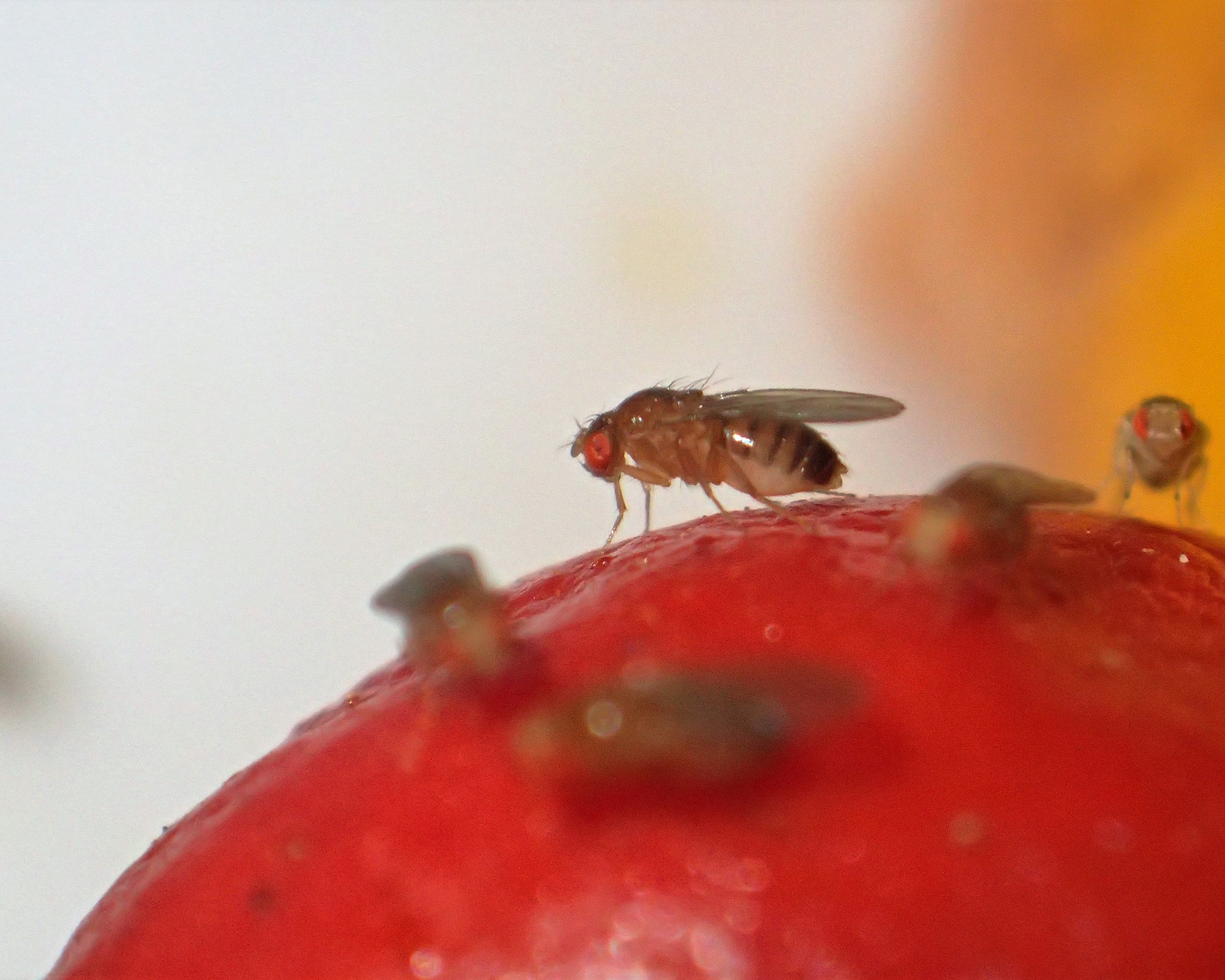
Have you ever been busy cooking, cleaning, or working and seen a tiny fleck whizz by? Odds are, the tiny flying pest is an annoying gnat.
These yellow to brown bugs lay their eggs in moist areas such as houseplant soil and sink drains. Whilst severe infestations can kill your plants, gnats aren't a danger to people as they don't bite, sting, or transmit diseases.
Get small space home decor ideas, celeb inspiration, DIY tips and more, straight to your inbox!
In large numbers however, gnat larvae can damage plant roots and stunt growth, especially for seedlings and young plants.
Jordan Foster, pest expert at Fantastic Pest Control identifies the three most common household gnats, so if you're struggling to work out whether you've got gnats vs. fruit flies, our list of behavioural signs, and where they like to hang out will help you spot the difference.
Where you'll find gnats in the home
Adult fruit flies hang around near fermenting fruits and vegetables. They like rotten food waste and moist places, hanging around drains, garbage disposals, empty bottles and cans, kitchen bins, cleaning cloths, and mops. Learn how to get rid of fruit flies with apple cider vinegar (such as the Whitehouse Raw Organic Apple Cider Vinegar from Walmart), and more.
Fungus gnats are likely the culprit if there's sudden wilting, loss of vigor, poor growth, and yellowing of your plant's leaves, it's likely infected by these pests and you'll need to learn how to get rid of fungus gnats.
Drain flies breed mainly in kitchen and bathroom sinks and drains, and love humid spots. If you see them swarming, learn how to get rid of drain flies.
2. Signs of moths
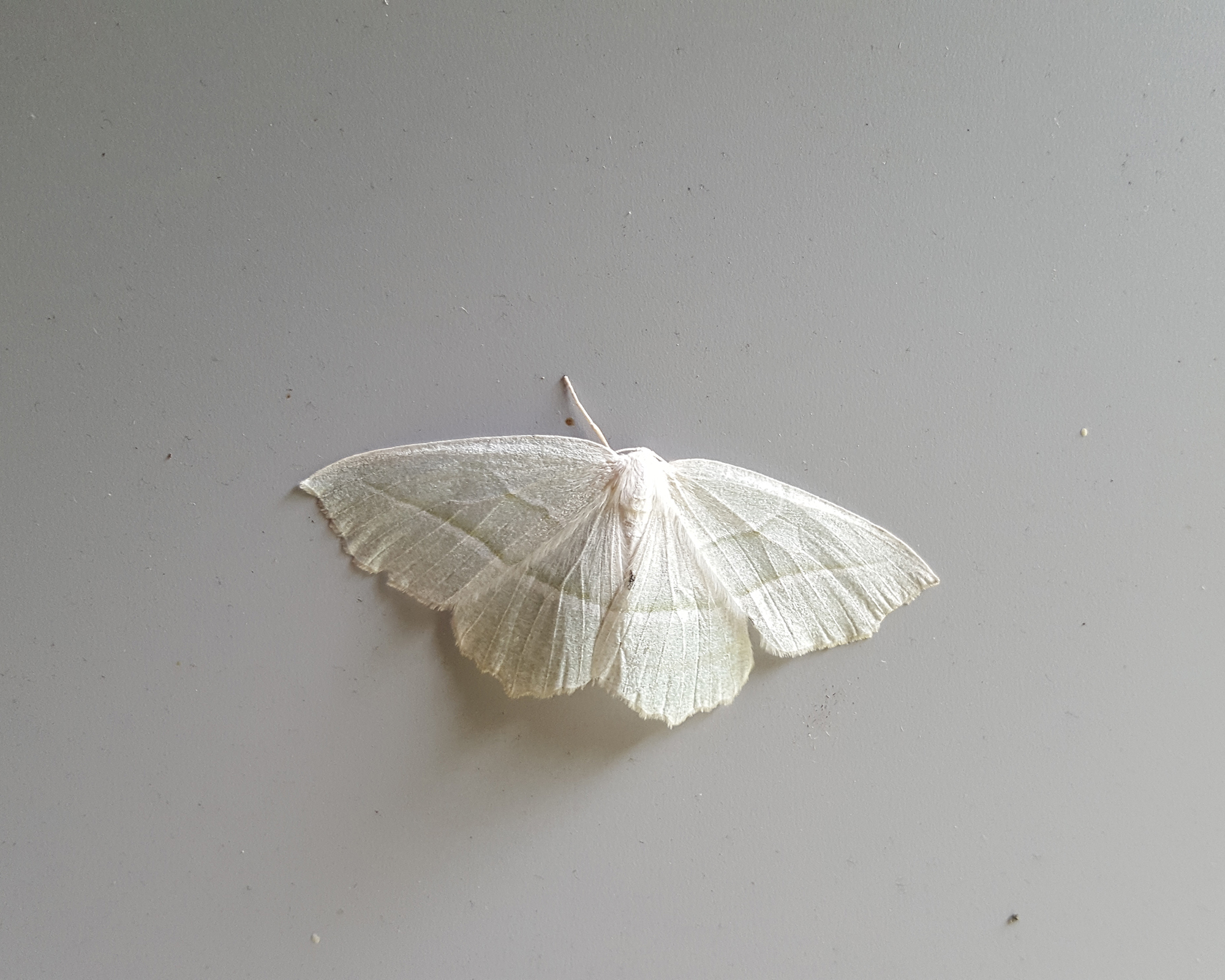
Moths and butterflies are both flying insects of the Lepidoptera group and look quite similar, but moths are nocturnal. If you're seeing these in your home, paying attention to where they're hovering will help you narrow down the moth type.
One of the first signs of these pests can be small signs of damage such as holes in clothes and upholstery. In severe infestations, fabrics can be chewed to moths to destruction, while pantry moths damage stored food.
Jordan Foster, pest expert at Fantastic Pest Control says, "The larvae of moths can do a lot of damage to clothes and infestations are obvious as moths destroy clothes, fabrics, and carpets. In most cases, you'll find several large holes."
If you spot moths in your pantry, do not consume any food that's been damaged by them. Jordan adds, Any item that looks contaminated should be thrown away."
You can then learn to get rid of pantry moths, or eradicate clothes moths from your closet and drawers. Enoz Store Moth Balls from Amazon are a great starting point to getting a handle on this pest in your home.
What moths look like
Moths have two sets of wings, bulbous eyes, come in muted colors, sometimes have a smattering of fluffy hair-like structures on their heads or bodies, and are attracted to light.
Meanwhile, moth larvae are small and maggot-like, and whilst growing, are protected by a silk cocoon.
3. Signs of bed bugs

Adult bed bugs have small, flat, oval, brownish bodies measuring about the size of an apple seed (around 5-7 mm or 3/16 to 1/4 inch long). They have wing pads on their shoulders but don't have working wings. When they'd fed, they may appear round.
If you have bed bugs, you'll find these critters and their eggs in beds and upholstery, though they're hard to spot. Heat will flush them out but you'll find it's probably easier to identify them by their impact on you, unless unless the infestation is severe.
Signs of bed bugs in the home include:
Though it may cause you physical discomfort and give you the major ick, you can get rid of bed bugs permanently, whilst one of our top-rated best air fresheners will help eliminate their odor.
Mrs. Meyer's Clean Day Room Freshener Spray in Lavender available on Amazon is an affordable non-aerosol.
3. Signs of termites

Termites are six-legged insects larger than ants, with straight antennae, wide waists and are either white or brown in color. There are a few different types including small worker and soldier termites, dark medium sized kings, large bulbous queens with long bodies, and winged reproductive termites.
Together, they are good at hiding and are hard to spot until it's (almost) too late. Learning the early signs of a termite infestation will give you the best shot at getting rid of them.
Alice Shaw-Beckett, from Cleanipedia says, "Termites can cause serious structural damage to your home by chewing through wood. A professional exterminator may be the best way to remove termites, but you can prevent their access to your home by sealing up cracks and gaps in your walls and keeping wood (like lumber) away from your home's foundations."
If you suspect you might have termites, stock up on suitable insecticide (we recommend the highly-rated, easy-to-use Spectracide Termite Killing Foam from The Home Depot) and get to grips with our termite warning sign checklist:
- Discarded broken wings: As termites age, the winged termites leave the nest to create a new colony. Often resembling fish scales, they drop their wings when they're no longer required.
- Frass: Otherwise known as termite droppings, these tiny 1mm long pellets are left in mounds that resemble black marks, or a dark powdery substance that looks like pepper.
- Drywall damage: Drooping and discolored drywall with pinpoint holes can be a tell-tale sign of termites.
- Paint damage: You might notice bubbling, and peeling paint, which could be due to water damage or a termite infestation.
- Floor damage: Wooden and laminate floorboards can buckle with termite subfloor damage, as can decking.
- Loose tiles: Termites can introduce moisture and subsequently floor tiles will move out of place and/or crack.
- Wood damage: Crumbling, damaged wood, and maze-like patterns in furniture (including coffee tables, wooden flooring, or walls).
- Flying termites: If you spot swarms anywhere in your house, it's unfortunately very likely you'll find more termites below deck so consider calling for professional help.
What termites look like in different life stages
- Termite eggs: Tiny, white or light brown and translucent eggs visible to the naked eye.
- Termite nymphs or larvae: These resemble small white versions of adults on hatching
- Adult termites: All termites have straight bodies with no segmenting at the waist, and straight antennae. These are the type you'll see about your house. They develop a firm exterior and wings in order to swarm and reproduce.
- Worker termites: You probably won't see these as they are beavering away in the colony. They have soft, fleshy bodies and measure between 1/4 and 1/2 of an inch long.
- Soldier termites: With a distinctively shaped head and pale red, light brown or white elongated bodies, they are typically bigger than workers. They have protruding mandibles (mouths) to help them protect their colonies from ant invaders.
Find out how to get rid of termites, before they wreck your wooden window sills, wooden floors, furniture or decking.
4. Signs of cockroaches
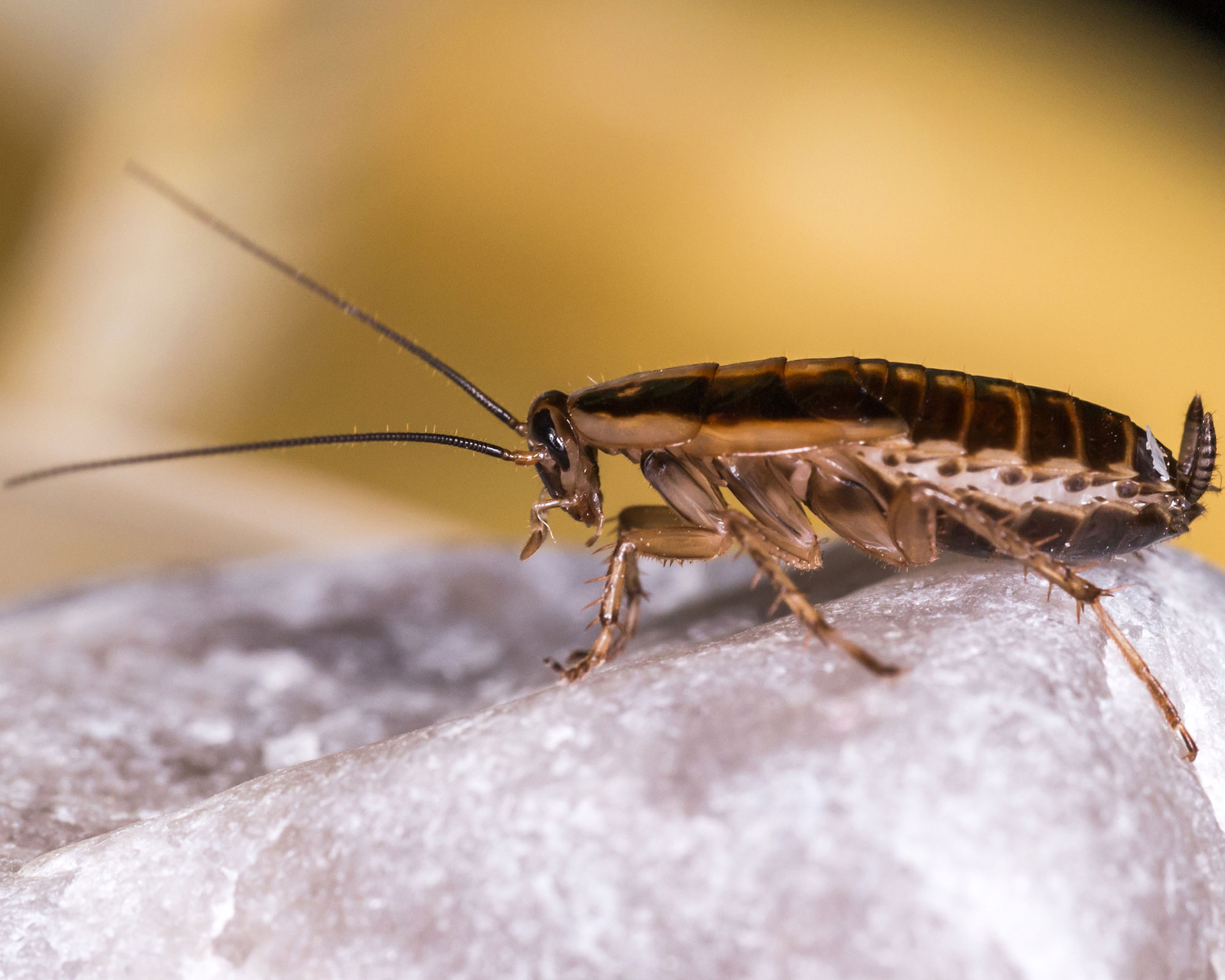
Cockroaches are easily visible to the eye, have six legs with what look like tiny bristles on the legs, long antenna, are dark in color, have a hard shell, grow up to 1.5 inches long and are nocturnal.
They also carry various diseases and often enter homes in paper products such as bags or cardboard boxes, seeking refuge in dark, damp places with a bountiful food source.
Alice says, "Cockroaches are attracted to food and bodily fluid stains on clothing (learn how to get blood stains out of clothes quickly), and the best way to deter these creepy-crawlies is by washing your clothes thoroughly and not letting soiled clothing pile up.
"Dampness and wet areas in the house can also attract cockroaches, so watch out for leaking pipes."
If you have seen cockroaches or suspect your home has an infestation of these fast-moving pests, our expert guide on how to get rid of cockroaches will help you get your home — and piece of mind back.
We recommend the Ortho Home Defence Insect Killer from Lowe's which can be used indoors and outdoors and is rated 4.5 start by hundreds of happy customers.
What cockroaches look like
- American cockroaches: Measuring 1.5 inches long, this is the largest of the cockroach home invaders. They have a reddish-brown body with a light brown center and yellow-ish outer edge. They have wings to glide with but don't fly.
- Oriental cockroaches: Not quite as big as the American cockroach, this roach averages about one inch in length. Oriental cockroaches differ in appearance from male to female. The males are slightly shorter (one inch) with stubbed wings, while the females are longer and skinnier (1-1/4 inches) but without wings. Both are reddish-brown to nearly all black.
5. Signs of ants

There are more than 25 species of ant that can invade the home. Though these insects are typically harmless pests, their clever scent trails quickly alert their colony mates to food and water sources, making one ant quickly turn into hundreds which is trouble if they find their way into your home and to a food source they like.
These insects can be tiny and hard to spot, or up to one inch long depending on the type, but are usually black, brown, red or yellow. They have six legs, and unlike termites which have straight legs, ants have 'elbows', a narrow waist.
In our guide on how to get rid of ants, experts revealed these insects get busy in spring and summer, both by way of breeding, and also get driven inside by abundant rain or hot weather. Carpenter ants follow liquid to tunnel through rotting wood.
The signs of an ant infestation to watch out for include live ones inside your home and trails of the insects going in and out. Ant nests resemble small piles of soil or dirt so if you spot those, or lives bug trails, take quick action and get rid of ants in your backyard. If you have these there, we recommend using the Cutter backyard bug spray.
You can use natural repellents such as Fiora Naturals Tea Tree Essential Oil from Amazon (try a few drops mixed with water and sprayed around entrance points and on trails), coffee grounds, cinnamon, pepper, or white vinegar.
Poison such as Pure Original Ingredients Borax from Amazon works well, too. For bigger infestations, our experts recommend TERRO T300B Liquid Ant Bait Ant Killer, available on Amazon.
With ants, it is particularly important to clean away any trace of their trails as well as food and water. Using one of our tested and reviewed best mops would be a great step to take after sweeping and vacuuming your floors to rid any ants from your kitchen fast, and stop them returning for seconds.
What ants look like
You can tell the insects in your home are ants, and not termites or other bugs from a few distinguishing physical and social features:
- Three body sections: Ants have a head, thorax, and abdomen, plus antennae.
- Colors: Depending on the sub-type, ants can be black, brown, red or yellow, with colonies carrying same physical traits.
- Ant colonies: These insects are social bugs that live in colonies of hundreds, if not thousands of them, so you're likely to see more than one.
6. Signs of dust mites
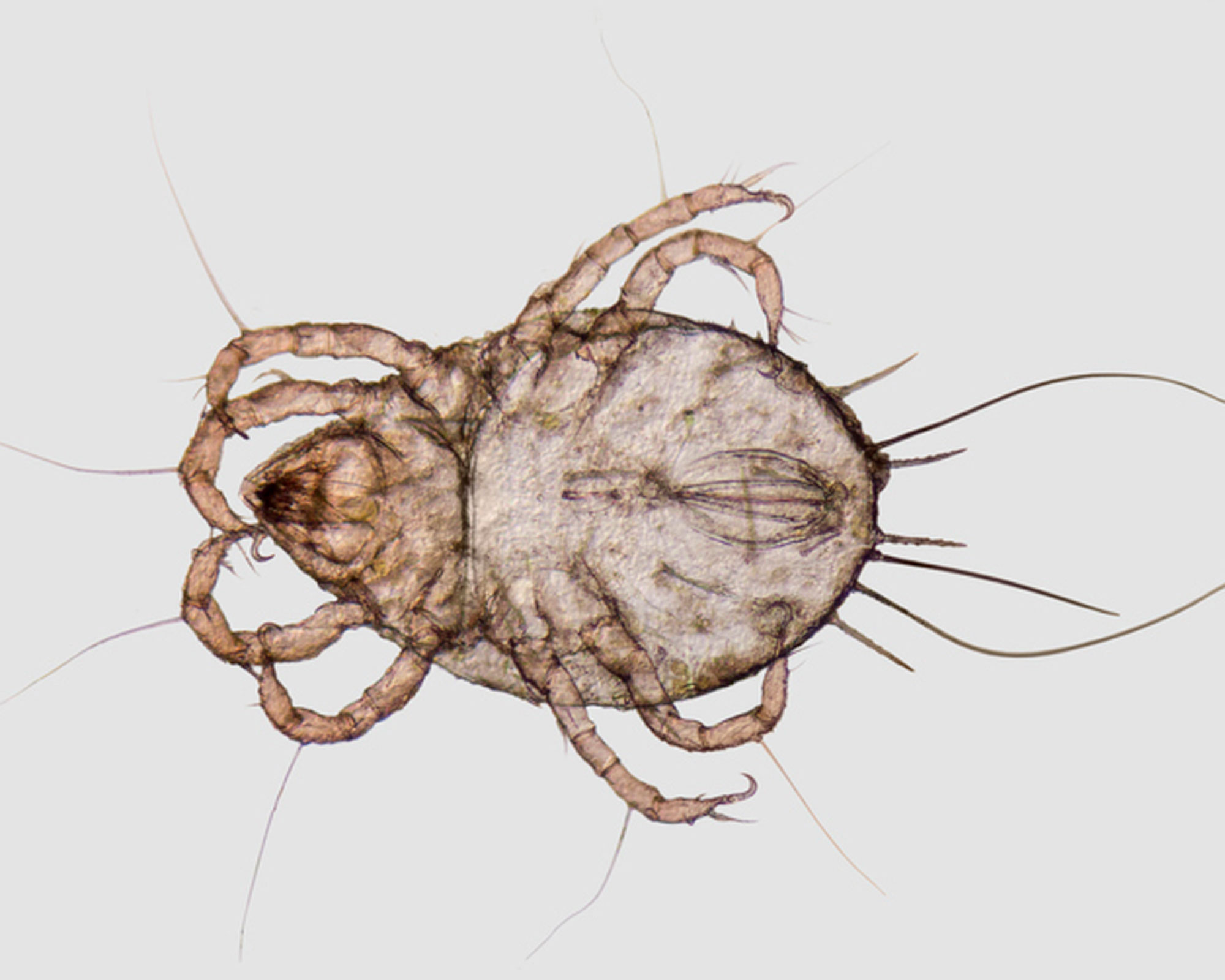
Dust mites are microscopic insects that live, feed, and excrete their waste in our beds, sofas, and soft furnishings.
They're generally not harmful to our health, and are invisible to the naked eye and spend their time feeding on shed human skin and pet dander.
However, between five and 30 percent of the US population suffer allergies or skin sensitivities to dust mites. You can ease the impact by using anti-mite pillow cases such the AllerEase Pillow Protectors on Amazon.
The signs to look out for on dust-mite allergy include:
- Runny, itchy, or blocked up nose.
- Itchy, red or watery eyes.
- Itchy roof of mouth or throat.
- A cough or postnasal drip.
- Facial pressure and pain.
What dust mites look like
Dust mites are microscopic arthropods, estimated to measure 1/4 to 1/3 mms long. You can really only see them under a microscope, and even then, they are tiny, round, white spider-like creatures.
Learn how to get rid of dust mites to limit their numbers and your reaction to them, and delve into tips for cleaning your mattress, cleaning your mattress topper, and freshening up your pillows.
7. Signs of fleas

Adult fleas are small, wingless, flat insects, with three pairs of legs and biting mouthparts. They measure around 1/8 inch long and are dark reddish-brown in color and can jump up to
These bugs usually hitch a ride inside your home on your cat or dog, and survive by feeding on the blood of animals, and humans. Plus, they're fast and hard to catch by hand. Yikes.
Whilst flea bites are not harmful, if you've ever been bitten by one, you'll know how itchy and uncomfortable they are (Calamine, available at Target, helps), and how the bites (which are not harmful) can occur in a cluster, or trail, tracking the path of the flea caught up in your clothing.
According to one study, fleas have been known to jump up to 13 inches, whilst averagely, they are known to jump a distance of just over five inches.
The difficulty with this fleas is they breed quickly with one female laying up to 20 eggs that can hatch within a couple of days.
The best cure in this case is prevention: use one of our best vacuum cleaners to regularly clear dust and debris from your home, removing pet hair, and dander too. Remember to change your sheets regularly and medicate your animals so if a flea hitches a ride inside your home, any bite they'll have taken of your medicated pet will kill them within a matter of hours and stop them biting you, or laying eggs.
Our detailed guide on how to get rid of fleas will help you carve a path to remove these pests for good.
8. Signs of flies

Like ants, flies tend to appear in summer, attracted by the smell of food. Flies carry more than two million bacteria on their bodies and liquefy their food by regurgitating digestive juices on to it.
This is why they can so easily pass on stomach bugs and gastro-illness to members of your household. If you find flies love your home or get in more easily than they get out, make sure to pack away food or use reusable food covers (such as the Patelai Store's colorful and fun fruit-motif cotton lid sets from Amazon).
Flies breed fast so time is of the essence in neutralising them. Spotting the signs of an infestation is key to controlling their spread and ultimately, eradicating them from your home.
- Pinhead-sized black clusters of spots: Usually found in areas near light, small dark clusters of spots could be clusters of young flies waiting to reach adulthood.
- Regular sighting of flies: Usually you'll spot them around your home, food or kitchen trash cans.
- Maggots: Indicating a potential breeding site, these are flies in their larval stage.
What flies look like
There are a plethora of different types of flying insect, and within that category, dozens more different types of fly. However, all flies share similar characteristics:
- Multiple body parts: Adult flies have three parts — a head, thorax and abdomen.
- Color: Size and color will vary varies depending on the exact species of fly but most are small, measuring around 10mm long. Their heads have a pair of compound eyes, antennae, and various different mouthparts.
- Fly eggs: These are the size of small grains of rice and pale in color.
- Fly larvae: Also known as maggots, resemble small, pale, short, worms.
We've detailed how to get rid of flies in your home — including making your own spray, DIY flypaper, and more — in our guide. You can also buy store flypaper for ease (we recommend LFSYS Sticky Paper Fly Traps from Amazon).
And, if you've spotted wiggling larvae in your kitchen bin, you'll definitely want to read up on how to kill maggots.
9. Signs of carpet beetles
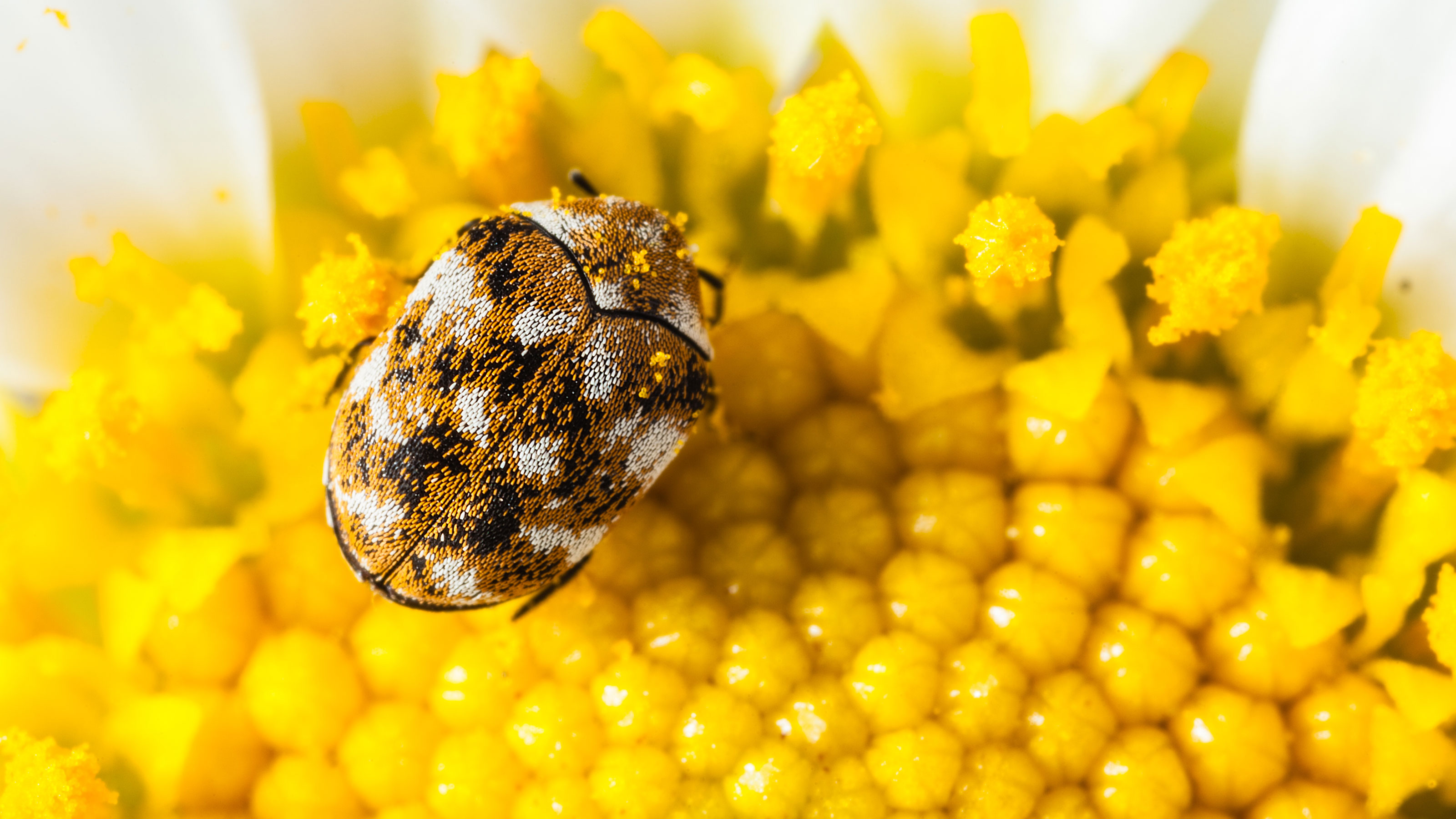
Adult carpet beetles can grow up to 4mm and resemble small, dark dots. They are good at hiding, often cramming under floorboards, vents, cracks as well as carpets, clothing and other upholstery, and therefore can be extremely hard to spot.
Fully grown carpet beetles can fly and lay up to a hundred eggs at a time — meaning an infestation can take hold quite quickly.
Whilst you may not spot a carpet beetle, you'll sooner spot the trail of devastations their larvae leave behind. The highly-rated Grandpa Gus's Advanced Pest Control Spray from Amazon is a great starting point to taking control of the situation.
Meanwhile, here are the top signs to look out for in a carpet beetle infestation:
- Fabric damage: Like clothes moths, carpet beetles create thin, bare areas, or bore holes in natural fabric items such as carpets, rugs and upholstery.
- Cast skins: As carpet beetle larvae grow, they shed their skins, leaving empty, light brown skin cases in their wake, typically around the areas they've been feeding.
- Droppings: The larvae produce tiny faecal pellets about the size of a grain of salt.
- Live or dead adult beetles: When adult carpet beetles develop, you'll see them crawling towards windows and doors to head outdoors to mate.
We've shared lots of different methods and approaches to getting rid of carpet beetles and the good news is that you don't have to shell out and call professionals in for the job.
10. Signs of silverfish
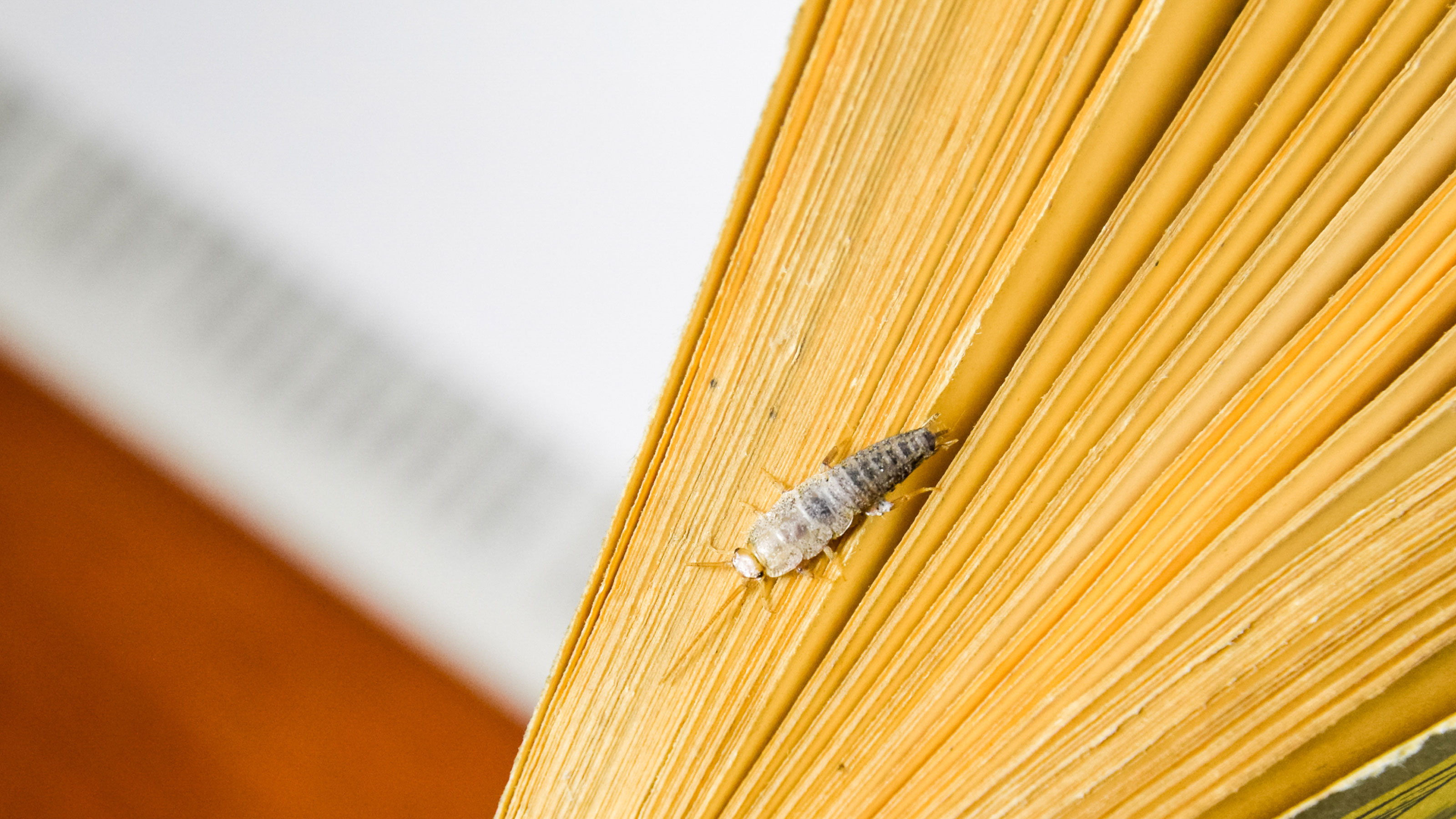
Silverfish are harmless small pests that are more off-putting than anything else. Afterall, nobody wants to share a bathroom with one.
These insects are attracted to damp places, such as bathrooms and kitchens, and will feed on the glue in wallpaper paste. Improving ventilation will reduce dampness, making your rooms less attractive to them. Our best humidifiers can help with that in rooms both with, or without adequate ventilation.
Keep an eye out for these tiny silver-gray,wingless insects in attics, closets, and around bathroom fixtures, especially the baseboards.
Signs you have an infestation include:
- Bite marks: Especially ones that resemble holes, notches along an edge, or surface etchings in paper, cardboard and goods with glue (a rich source of protein for them)
- Remnants of silverfish: Molted scales and yellow marks where they like to hang out.
- Silverfish droppings: You might spot tiny black pepper-like pellets on infested materials.
What silverfish look like
- Distinctive shape: They have tear-shaped bodies with three long bristle-like appendages coming off their back, plus a long pair of antennae.
- Notable color: As the name suggests, they are usually silver, though brown ones are not uncommon, which comes from silvery scales that cover their bodies.
Getting rid of silverfish is easy. In most cases, reducing moisture levels in the air, through increasing ventilation, using the right size dehumidifier for your space and sealing any gaps (with crack-proof sealant such as the Extreme Stretch Elastomeric Sealant from DAP Store on Amazon) can stop silverfish in their slithery tracks.
11. Signs of spiders

Arguably one of the most scream-worthy and loathed pests to find in your home, spiders often crawl indoors, especially in warmer months when they go wandering, and get bolder, in the hunt for a suitable mate.
Whilst arachnophobia is rife, most spiders are largely harmless and as the old saying goes, probably more scared of us than we are of them.
These eight-legged creatures are typically not dangerous and even poisonous varieties tend not to bite unless provoked. An easy way to get rid of them, is reduce the risk of them getting inside your home in the first place with Window Mesh from Loboo Idea Store on Amazon.
Nevertheless, rogue roaming spiders aside, the top signs of a spider infestation in your home include:
- Webs: Some spiders can create very ornate webs, while others look as if they put as little effort as possible into making a home of their own in yours.
- Egg sacs: Most types of spiders lay hundreds of eggs at once, wrapped up in cozy silk balls. If you spot these sacs in your home there's a chance you'll have hundreds of baby spiders on your hands.
- Lots of flying insects: If you spot lots of flies, mosquitoes or moths in your home, chances are you're going to get a lot of spiders too, as winged creatures are a spider buffet in the making.
- Spider sightings: The ultimate sign of an infestation is seeing eight-legged beasties walking your halls and walls.
What spiders look like
There are seven common spiders that usually end in your home, and they share similar characteristics:
- Spider body shape: Two body segments, eight legs, and no wings nor antennae.
- Head: On the front of the head are the mouth, the fangs, the eyes, and two small protrusions called pedipalps.
- Fangs: All spiders have fangs that they use to bite their prey with, and most have venom glands for this purpose.
- Size: Female spiders are often much bigger than males.
Keep spiders at bay by cleaning away their food source of dead flies, woodlice, millipedes, centipedes and other crawling insects. Remove webs and eggs sacks too. Learn more on how to get rid of spiders naturally in our expert-packed guide.
12. Signs of wasps

Most of us have suffered a wasp sting at some point, which makes them doubly-unwelcome pests, particularly when we're trying to create the perfect outdoor dining area idea in our garden.
Common wasps are large buzzing insects with yellow and black striped, wasp-waisted bodies. Whilst in early autumn they are more docile, their sting is just as painful.
Finding a wasp nest in your house is another matter altogether. Here are the signs that wasps have set up a nest in your home:
- An abundance of wasps: If lots are flying around, it's a strong sign you might have a wasp issue.
- Nest sightings: Wasps make their nests in sheltered spots, including wall cavities, attics, under eaves, in sheds and garages. The nests look like papery gray balloons, and often have an intricate swirl pattern on the outside, with cells visible from the bottom. However, if wasps chew colored paper to build their nests, the finished product will look a little more artistic.
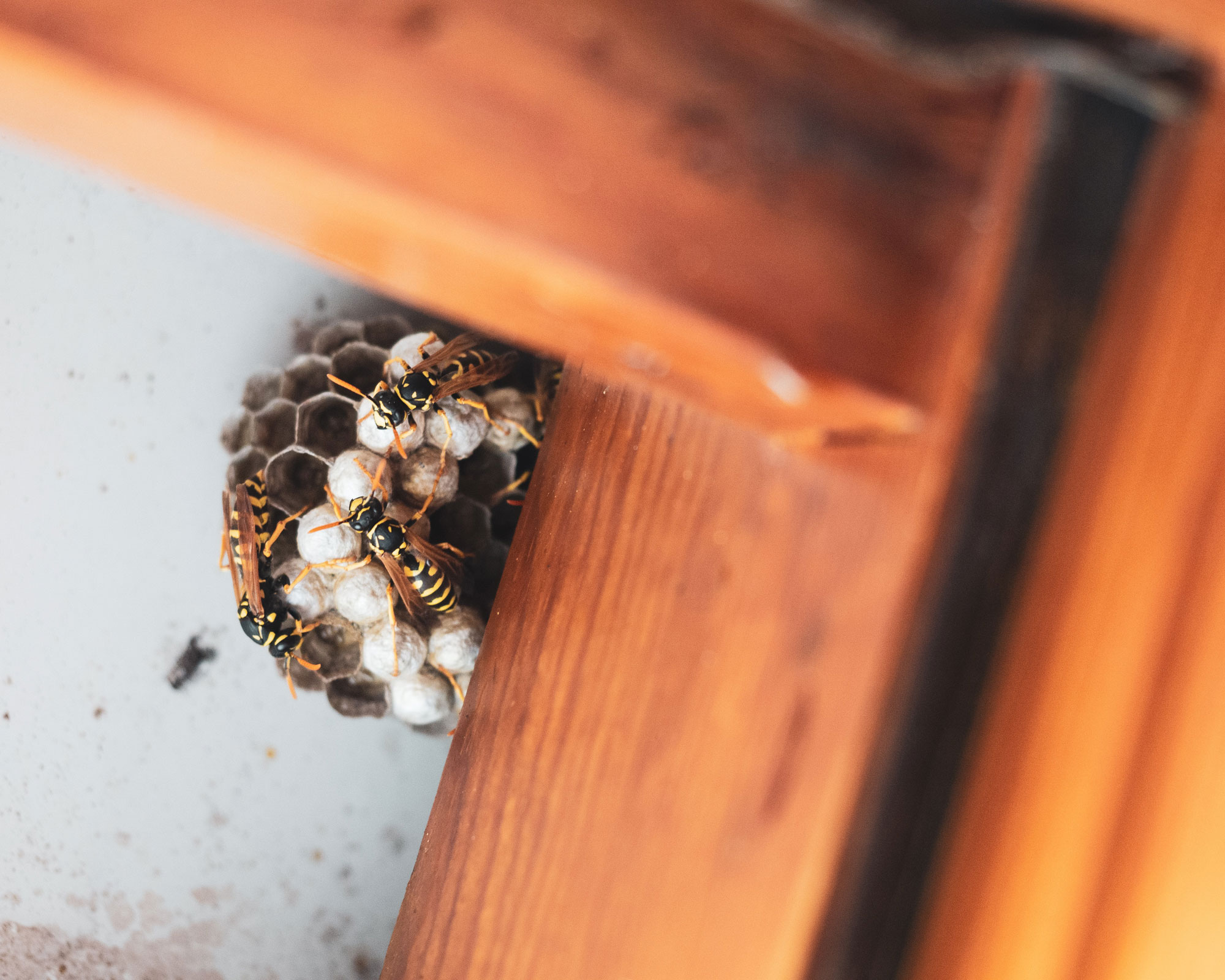
What wasps look like
There are quite a few different types of wasp so we'll lay out the difference between the more common, and their more dangerous relatives, the hornet and yellow jacket, to help you identify bugs in your home.
- Wasps: Common ones have an anchor-shaped black marking on the front of their face and make football-sized nests in the ground or in roofs and trees.
- Hornets: Twice the size of wasps and a lot more aggressive. Measuring approximately 1.5 inches, hornets are identifiable by their brown and yellow striped bodies. Their stings are extremely painful due to chemicals in their venom.
- Yellow jackets: Measuring half an inch long, these are black and bright yellow, and make their nests below ground. They can be invasive and extremely destructive in nature.
Learn how to get rid of wasps without getting stung in our full guide.
13. Signs of woodworm

Woodworm infestations aren’t caused by worms, but wood-eating larvae or grubs that hatch from the eggs of different species of beetle.
These lay their eggs from April to September, typically on, or just under the surface of wooden items, such as floorboards, antique furniture, modern laminate flooring and flat-packed items.
Given the widespread damage they can do, it's important to get to grips with how to get rid of woodworm.
Here are a few signs of a woodworm infestation:
- New exit holes: Lout for these in furniture, beams and flooring; they're particularly likely to appear from May to October when woodworm are active. Don't believe anyone who tells you that the holes are a sign that the woodworm have left. In fact, it's entirely possible that new larvae will be within the wood.
- Dust around the holes: It might be the first thing you notice. It's not actually dust; but powdery droppings which look like fine sawdust.
- Weak floorboards or beams: This is a sign of a serious woodworm infestation.
What woodworm looks like
- Larvae: They're creamy white in color and look like little grubs, but are smaller than the tip of a pencil and difficult to spot.
- Beetles: They're around 3mm long and brownish-black.
14. Signs of woodlice
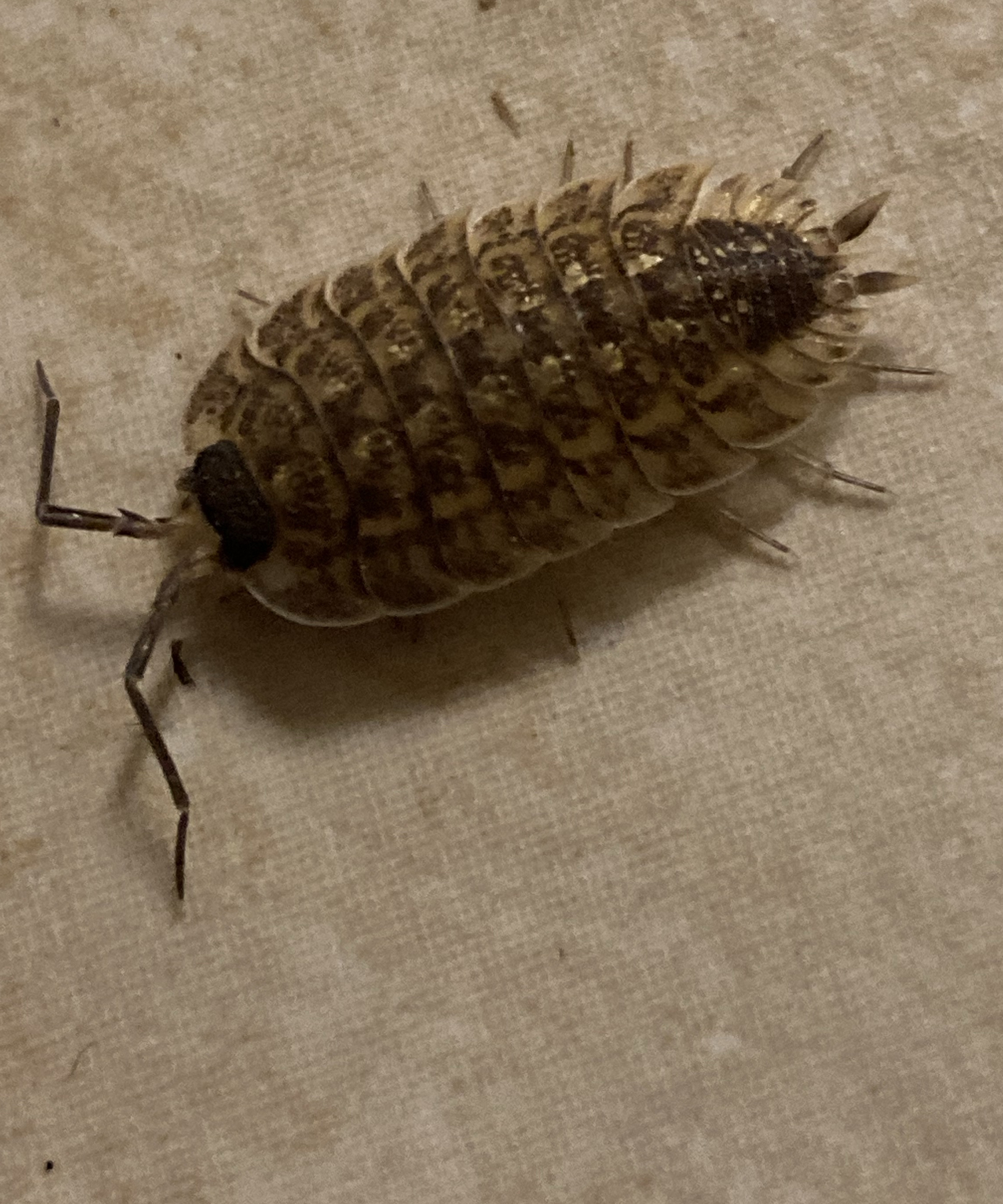
Woodlice are funny little bugs that, for the most part, are seen outside of the house, While they are helpful in promoting healthy biodiversity in your garden, if you've spotted them inside, it could be a sign of a home high in humidity.
These small, flat critters actively seek out damp areas, are attracted to dark, sheltered locations. You're more likely to see them at night and while they might give you the heebie-jeebies to look at, they won't harm your or transmit diseases.
Basements with rotting wooden infrastructure, poorly ventilated bathrooms and humid spots in the home are the most likely spots to find woodlice.
Much like with eradicating silverfish infestations, invest in a good dehumidifier (the TABYIK dehumidifier is highly-rated by Amazon customers and more than 8000 were bought last month alone), get some crack sealant (try Waterproof Gorilla Caulk and Sealant on Amazon) and install a bathroom ventilation fan if possible.
What woodlice look like
We're sure you're familiar with woodlice and their distinctive small, ridged, shape, but if you're not, you'll be able to detect woodlouse by the following characteristics:
- A dark gray-black, oval-shaped, shell-like body
- A thick exoskeleton with seven segments (think of it like an insect version of an armadillo)
15. Signs of ladybugs

Ladybugs, little (often) red beetle-like insects with symmetrical black dots on their back, are ironically a great natural method for pest control in your backyard. So good are they at eating aphids and other bugs that we have a whole guide on where to buy coccinellids, as they're also know, including eBay and Lowes.
That's not to say it's fun spotting these polka-dotted bugs in your home. You can gently catching them, popping them outside and discouraging them from returning by sealing gaps as per our methods above, and introducing the scent of citrus, clove (we recommend the Clove Oil With Sprayer from Essentially KateS Store on Amazon), or bay leaf in your home.
Indoor infestations may take hoovering up to clear.
What ladybugs look like
While there are 26 types of ladybugs native to the US, you're most likely to come across two:
- Coccinella septempunctata: These red beetles with black dots are commonly known as the 'seven-spotted ladybird'
- Harlequin ladybug: These non-native ladybugs are identifiable by their black and orange markings.
Phew, that was quite the itchy journey through our bug-identifying guide! Hopefully, any infestations are now identified and you're on the way to getting it under control.
Next, learn how to get rid of flying ants for bug-free enjoyment. Or, find out the plants that repel bugs outdoors if your backyard is infested.

Hi! I'm editor of Real Homes. I've been a senior journalist and editor for national magazines and newspapers for 16 years, specializing in consumer, real-life, and lifestyle articles. I have a BA in English Language and Communication, mentor journalists, and I’m also founding editor of Lacuna Voices, an independent digital platform. I love to cook, add character to my newly-built home, try my hand at DIY projects, keep my collection of plants alive, and make memories with my little family of three. For Real Homes, I specialize in articles on pest control, DIY, declutterring and cleaning, interviewing experts daily for their top tips and product recommendations.
- Christina ChrysostomouFormer acting head ecommerce editor
- Jenny McFarlaneSenior Digital Editor